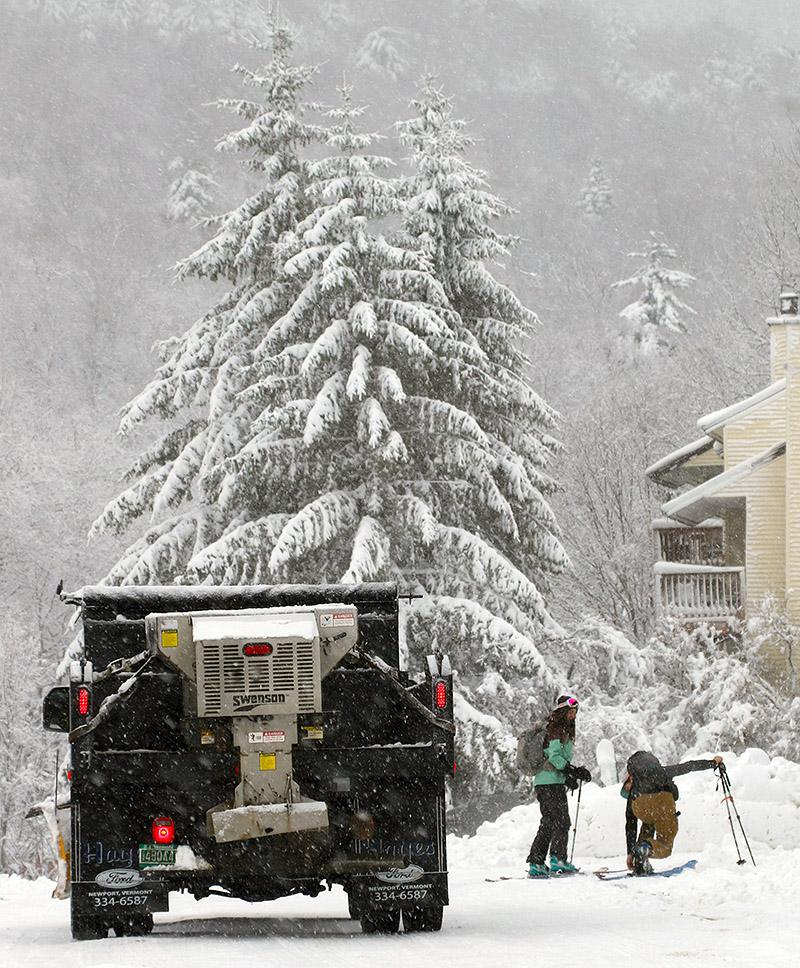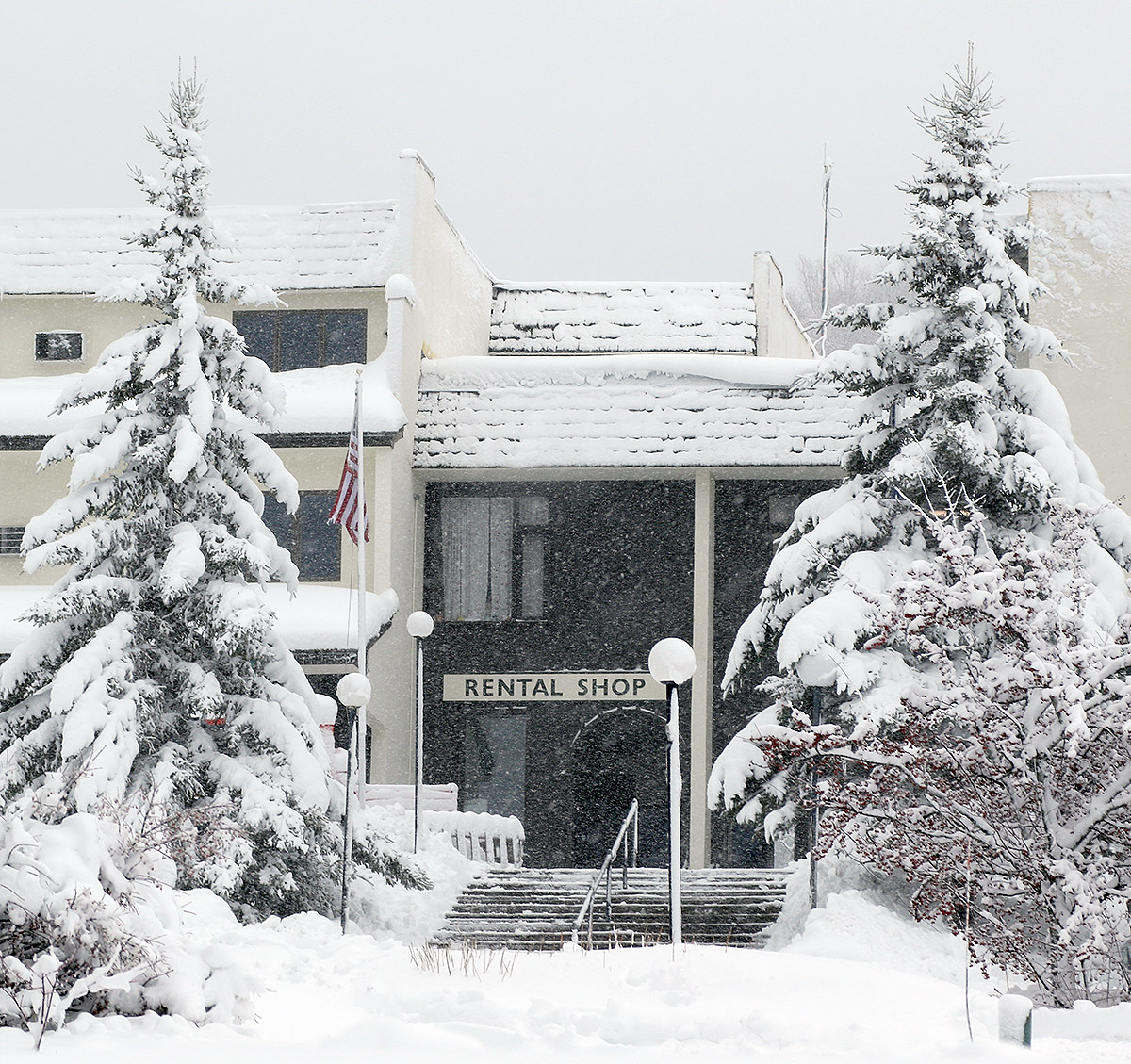
Of the 11 winter storms we’re recorded so far this season at our site in the Winooski Valley, 3 have delivered more than a half inch of liquid equivalent, and they’ve had a notable upward trend in L.E. The November 21st storm brought 0.72” of L.E., the November 26th storm brought 1.14” of L.E., and this most recent storm that began on December 3rd brought more than 1.40” of L.E., with snowfall continuing tonight. These storms have really helped to build the mountain snowpack, and the snow depth at the Mt. Mansfield Stake is now more than a foot above average.
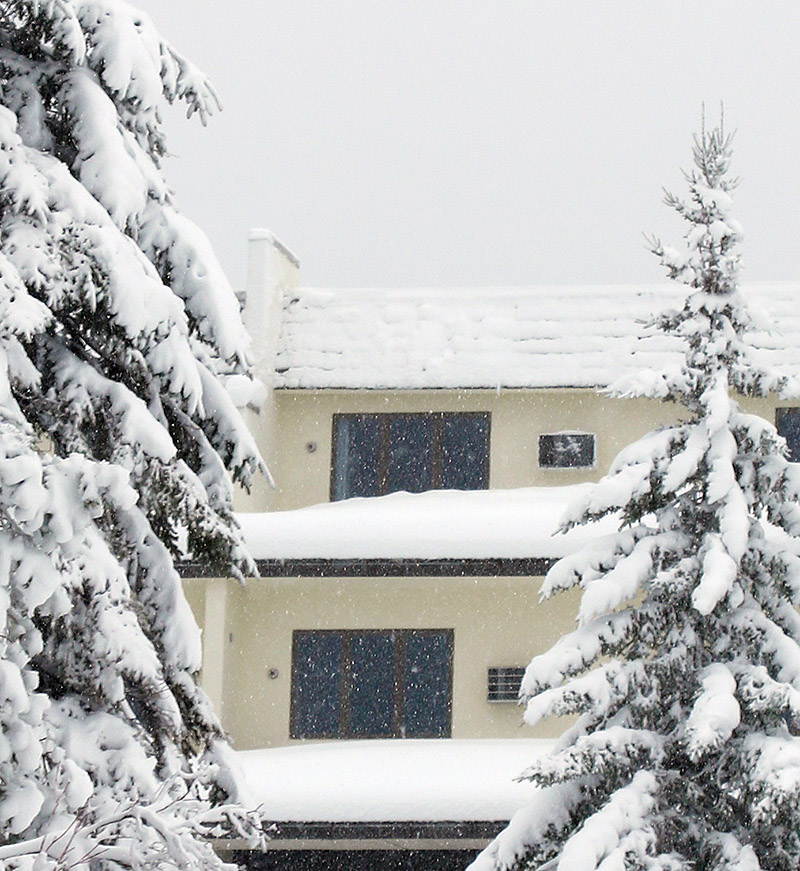
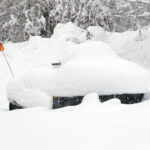 Bolton Valley was reporting another 14” of snow in 24 hours, and I popped up to the mountain this afternoon to check it out. Elevation has had quite an impact on the snow from this most recent storm, and the snow depth profile coming up out of the Winooski Valley is quite extreme. There’s really no snow at the base of the Bolton Valley Access Road aside from leftover piles, and it’s like that all the way up above 1,000’, and then the depth begins to ramp up. Here’s the snow depth profile I found on today’s ski tour:
Bolton Valley was reporting another 14” of snow in 24 hours, and I popped up to the mountain this afternoon to check it out. Elevation has had quite an impact on the snow from this most recent storm, and the snow depth profile coming up out of the Winooski Valley is quite extreme. There’s really no snow at the base of the Bolton Valley Access Road aside from leftover piles, and it’s like that all the way up above 1,000’, and then the depth begins to ramp up. Here’s the snow depth profile I found on today’s ski tour:
340’: 0”
500’: 0”
1,000’: 0”
1,200’: T-2”
1,500’: 6-8”
2,000’: 16-20”
2,500’: 20-24”
3,000’: 24-28”
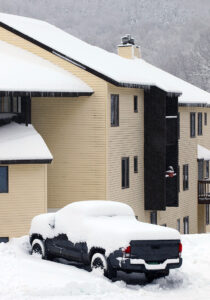
It was more challenging to get depth readings in those upper elevations since the pack is getting pretty deep and there are a lot of different layers with varying consistencies, but that general trend I’ve seen on the mountain recently of almost an inch of depth increase per 100’ of elevation gain seems to generally be holding. The depths I was getting at 3,000’ also seem generally in line with the current reading at the Mt. Mansfield Stake of 33” at 3,700’.
I arrived up in the Village in the early afternoon to a maelstrom of huge flakes coming down in association with the back side of the storm system, so the mountain continued to tack on more to the snow totals. Fat skis were unquestionably the play for today. The accumulations from this storm definitely came in denser than the previous one, and while fats were of course great for stability, they were also really nice for planing on lower angle slopes and getting additional turns out of that snow. Even though you were only sinking maybe 6 to 10 inches into the powder because of the density, it was still slow going if the slope angle got too low. Steep slopes indeed offered the best turns, and the base is so dense and deep that even on those pitches there’s not much to worry about in terms of coverage on the upper mountain.
